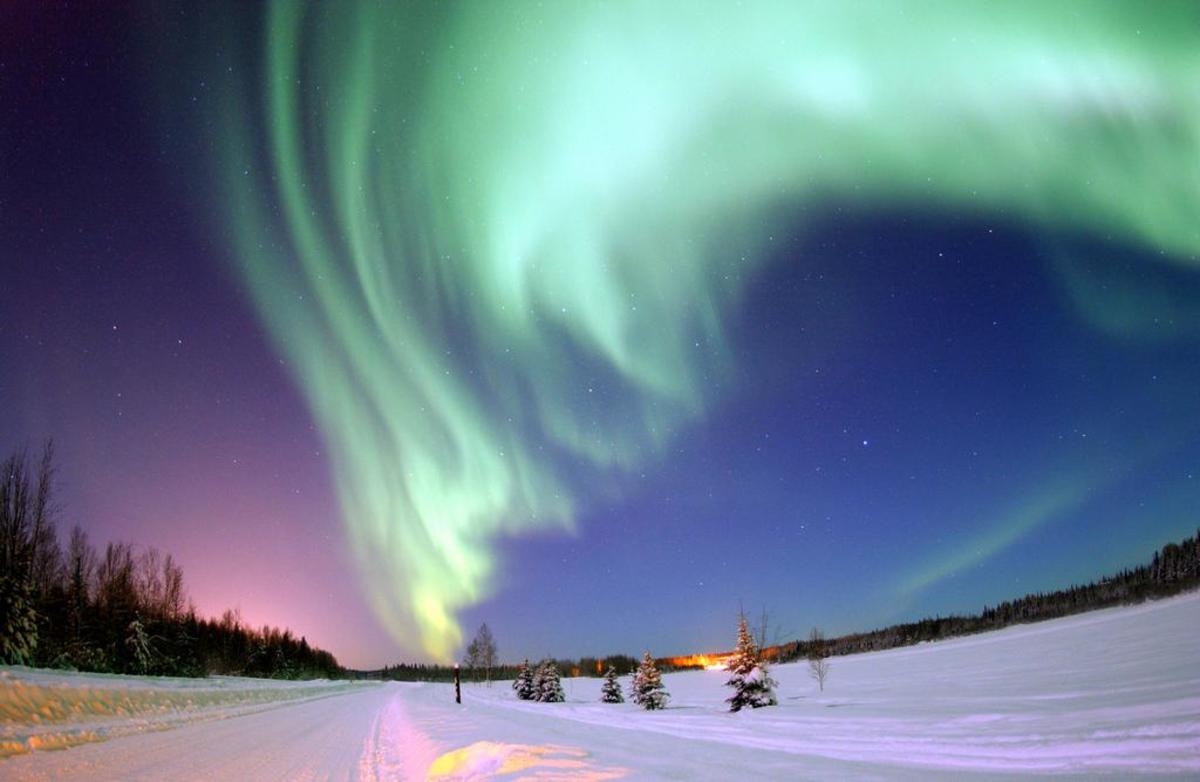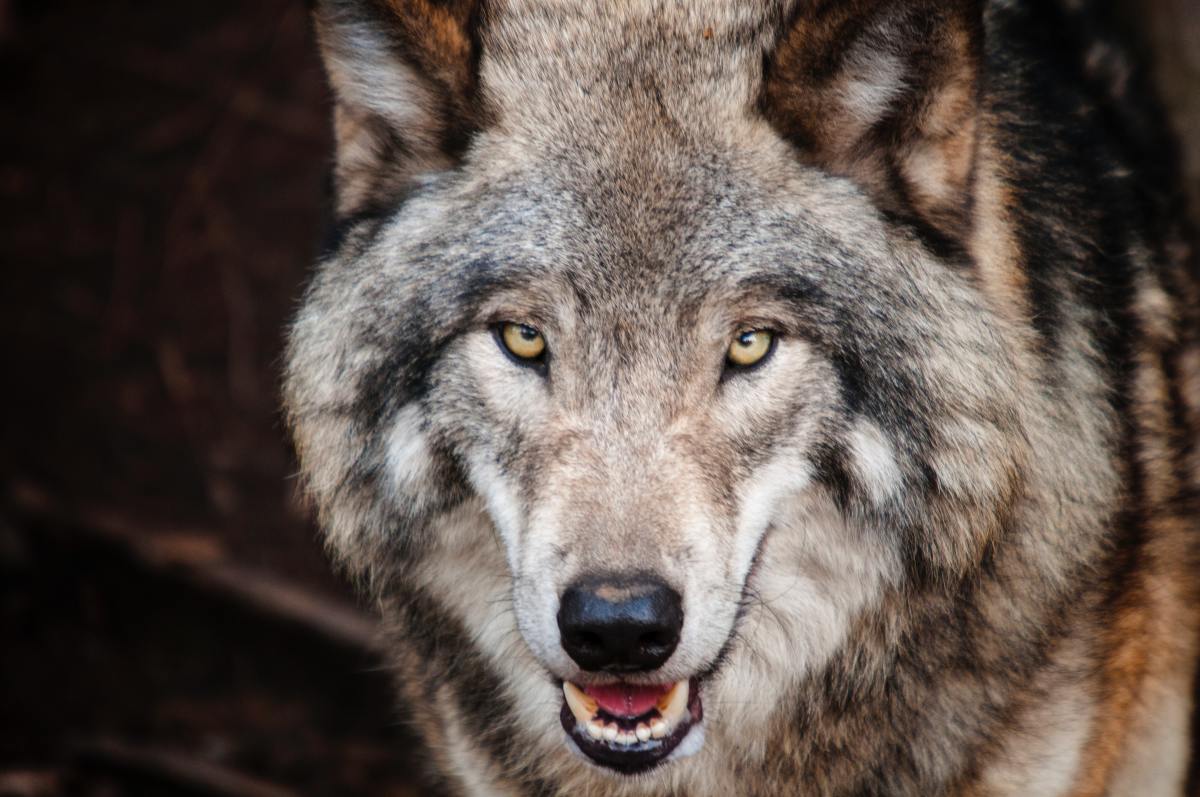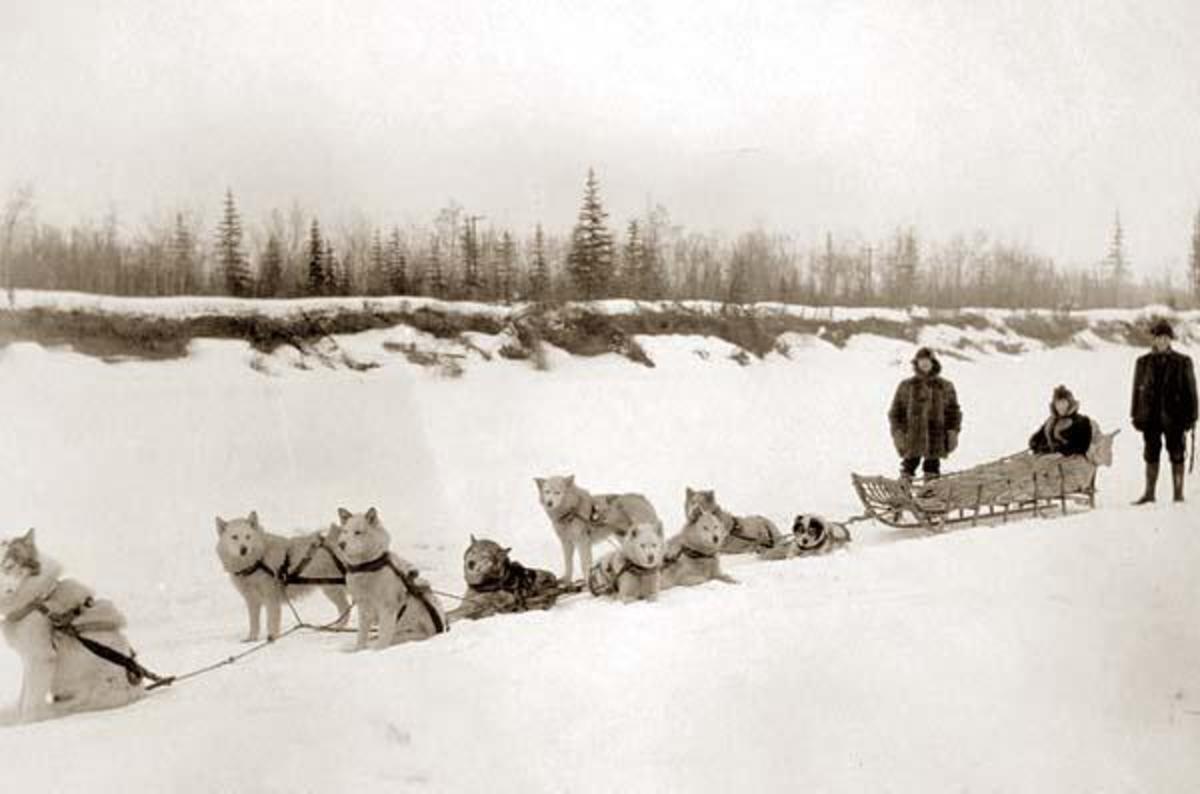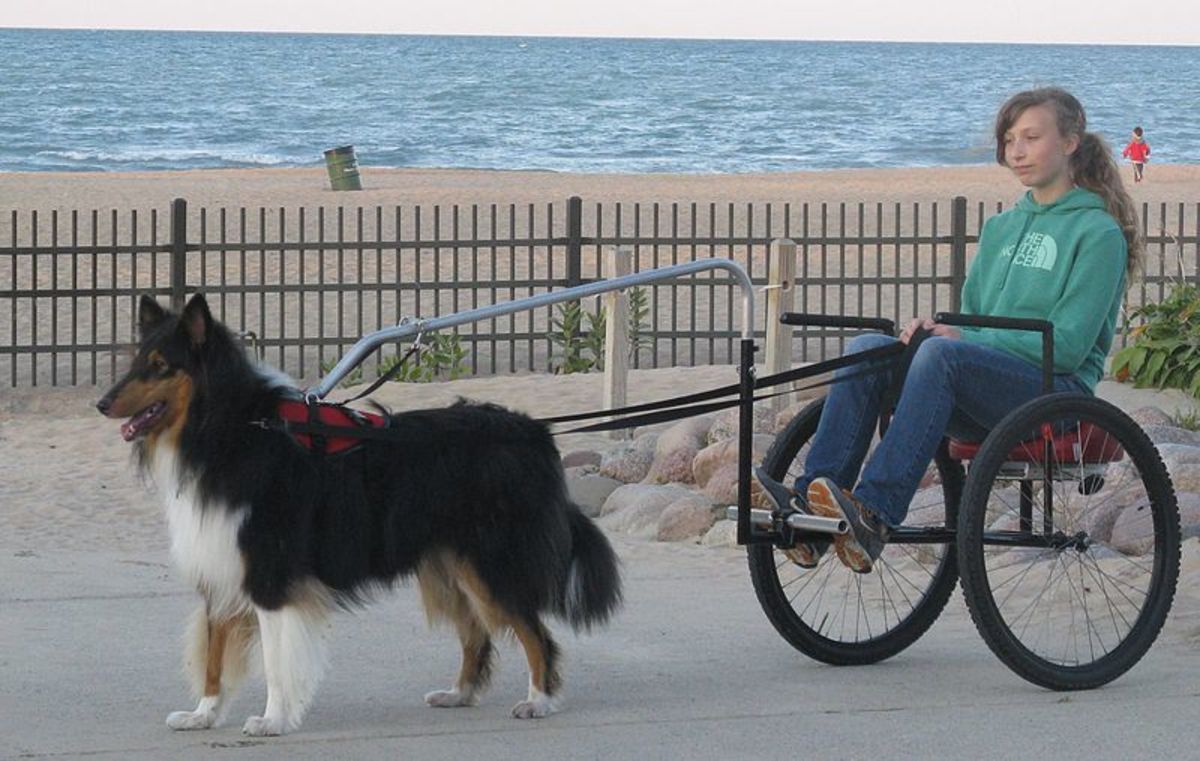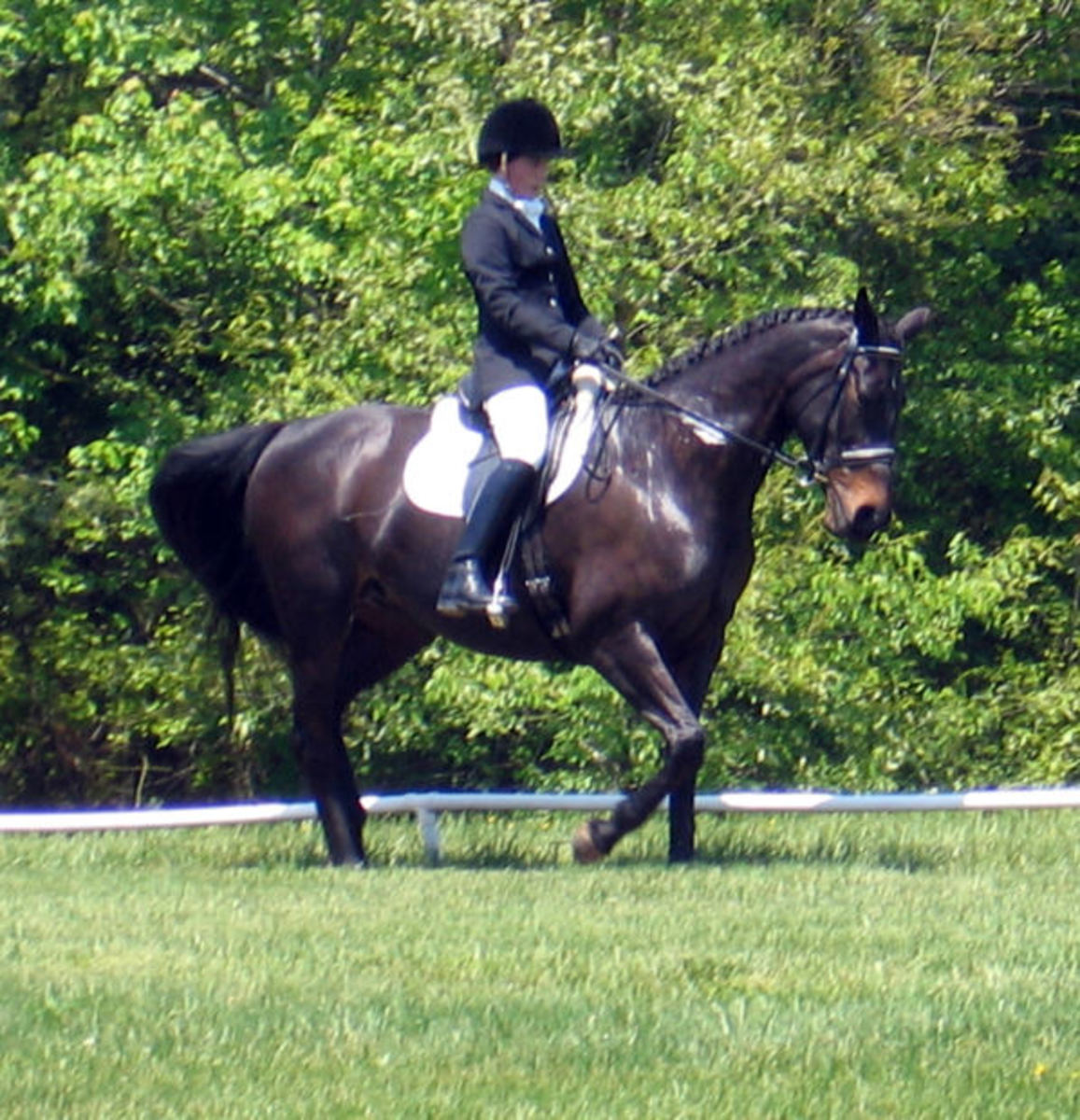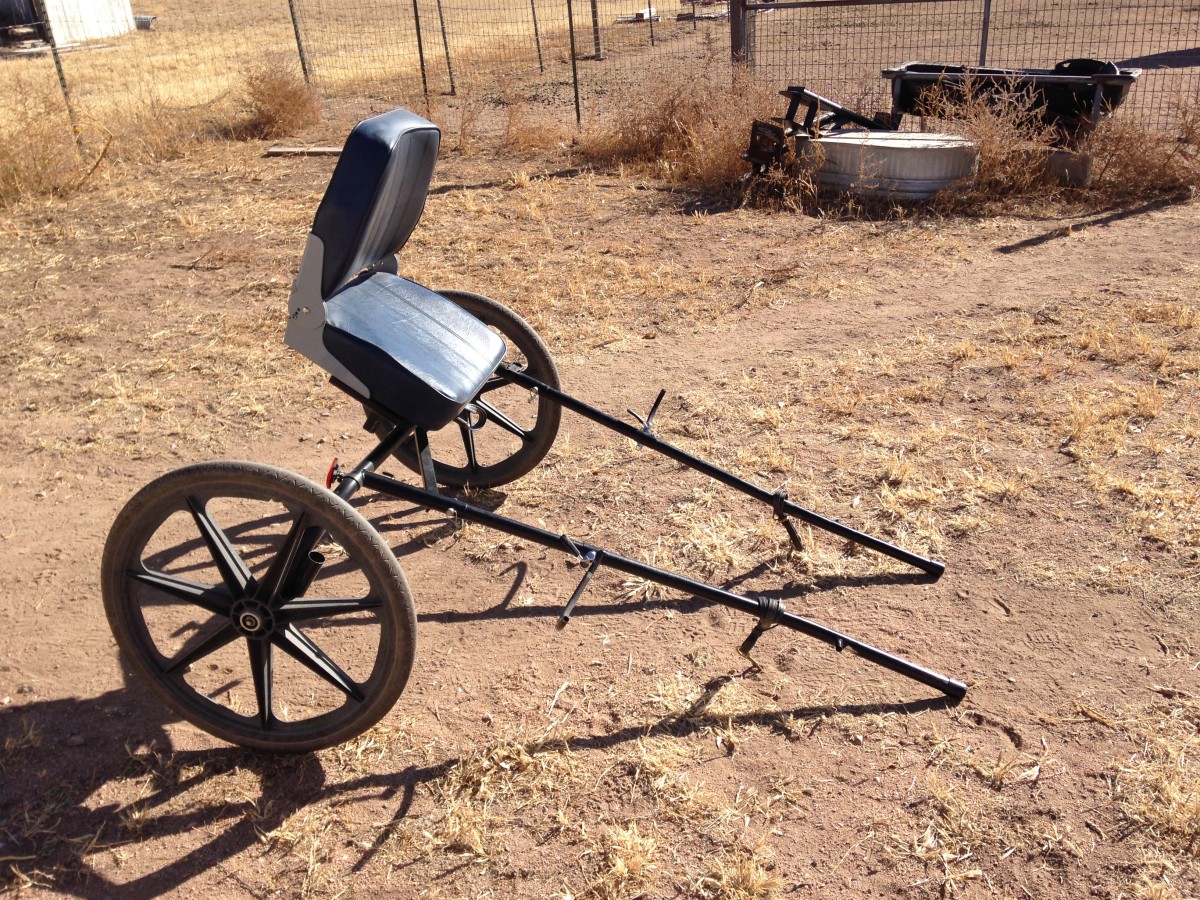Understanding the Basics of Dog Sledding - Dogs and Sleds
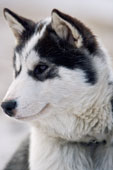
The ultimate dog sledding race: The Iditarod
The Sport of Dog Sledding
Dog sledding is not a new sport nor is skijoring or weight pulling. Many breeds were created specifically for these tasks many years ago. Some, like the Canadian Eskimo Dog and Alaskan Malamute, were created thousands of years ago.
Like most sports, dog sledding is based as much on desire as strength and stamina. It has been the overwhelming desire to succeed that has carried many teams to the finish line when all odds were against them, especially in the Iditarod Trail Dog Sled Race.
The Equipment
When you first become involved in any dog pulling sport, you will require a harness. The harness must fit correctly as an ill fitting harness can damage your dog through chafing and causing unnecessary muscle strain. A harness that is fitted correctly will lie flat on the dog’s back, go between the dog’s front legs and stretch across the last rib. The very tip of the harness should end up at the base of the dog’s tail.
When you first try your new harness on your dog, especially if he is inexperienced, let him get acquainted with the harness before you begin. Always keep this part of training fun and upbeat. If your dog is wiggly and excited, stand over him and hold him still between your legs.
Once your dog is harnessed he is ready to be hooked to either the gangline or skijoring line for a lesson in pulling.
Before your dog can begin pulling, he must learn the basic terms of direction and control. All sled dogs need to learn these basics, whether they are racing, skijoring or performing other types of pulling tasks.
The Commands
These are the basic commands that most mushers teach and use with their sled dogs:
GEE – right turn
HAW – left turn
GEE OVER – move to the right to pass another team or to the right of a trail
HAW OVER – to move left to pass or to the left of a trail
GEE/HAW COME – to have your leader come to you and turn the team around. This is an asset in case you cannot leave the sled or cart
ON-BY – to pass a turn off or distraction and keep going on the present trail
HIKE! – to start the team from a stop
WHOA! – the command to stop the team
Most mushers will use the same commands so that dogs may be borrowed or sold universally and not have to be retrained.
Every dog in your team should know the commands and learn to pull. These commands can be easily taught while simply walking your dog on leash and following the instructions as you give the commands. Basic commands such as sit and stay are also useful in a team and while harnessing or unharnessing. Use lots of praise while you train.
Remember to take everything one step at a time. Most dogs will need to get use to having something dragging behind them. They will also need to learn to ignore distractions and other dogs.
Once your dog is trained, you can use him for skijoring, racing, carting and recreational pulling.
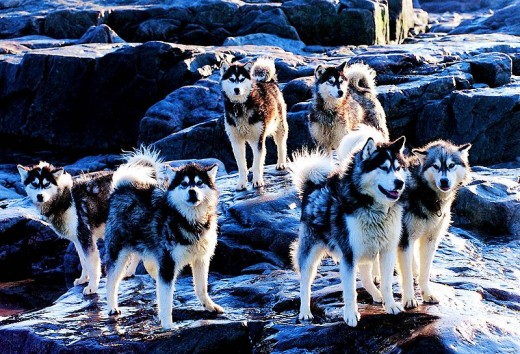
The Pack
A team can consist of one dog if that is all you own. The team can be made of the traditional husky or it can be made with any other large breed.
A team consisting of two or more dogs requires a gangline. The first dog in any team is called a lead-dog or leader. The dogs behind him are called the “point” or “swing” dogs. They are called the swing dogs as they are the dogs that help the leader turn a big team.
After the swing dogs comes the main team – the momentum.
The last dogs in the team are called wheel dogs. These dogs have the difficult task of manoeuvring the sled and getting it out of ruts. They also take all the shocks and jolts of the team in its starts and stops. Wheel dogs must be strong and steady and are quite often the biggest dogs on the team.
Team Size
Most ganglines are made to be added on to. This means that you can run different sized teams using the same gang line.
Before heading out for a long trip, be sure to check all your gear and each individual dog. Look for wear and tear in the equipment as well as improper fitting in the harnesses. Look for injuries, cuts or illness in your dogs.
The team size is dependent on the individual musher and the dogs. Never take more dogs than you can handle at once. When you are first starting out in sledding, a general rule is that the smaller the team, the better it is until you gain the experience to handle a larger team.
The Gangline
Ganglines usually run double hitch which means that there are two dogs running side by side. Sometimes a leader will run at the front alone, but many teams run two leaders at once.
One of the first steps in putting together a good team is to decide which dogs are best suited for each position. Size, speed, personality, amiability and a preference for right or left are contributing factors to this decision. Some individual dogs run better on the right or left. Determining these factors and positioning the dogs correctly take time.
Once your dogs have learned the basic commands, the next step is to teach your dogs to stand without tangling their lines. Practice starting and stopping and have them stand still so as not to tangle the lines. Some mushers teach their dogs to sit or to lay down when the cart or sled has come to a stop. Other mushers teach their dogs to stand but will not allow them to fight or move.
If this is your first time sledding, or you are training a new team, one or two miles for the first few times out are enough. While you are sledding, check each member of the team to be sure that each dog is pulling his weight. A hard working dog will have a low tail set, lowered head and a taut line.
Keep an eye on the lines. Should you detect a tangle, the cart or sled should be stopped immediately to prevent a dog from being dragged. Tangles can be inconvenient, but they are very dangerous and must be attended to immediately. Even good mushers can have a good run ruined by tangled lines.
Ganglines Illustrated


Important Rules of Sledding
Never let your brush bow (front of sled) hit the wheel dogs. If you are catching up on them on a steep hill, use your brake to slow down.
When going uphill “peddle” the sled (push with one foot) to assist your dogs.
Don’t be afraid to get off your sled to manoeuvre it around corners. Hairpin turns are easy for the dogs but not always easy for the sled.
If you topple your sled, try to hang on, and train your dogs to stop if the sled tips.
Ready, Set, HIKE!
With a well trained team and sturdy well cared for gear, you should be able to glide along the trail tangle free and without mush ado.
Beth100
Copyright 2010
Outfitters for dog sledding equipment:
- Sled Dog Central: Equipment & Supplies
- http://www.alpineoutfitters.net/Secure/Scripts/default.asp
Alpine Outfitters - We fit your dog sled needs. - Black Ice
Dog sledding adventure outfitters:
- Yukon Wild - Dog Sledding
Discover Yukon's dog sledding with our adventure experts. From beginner to expert level, day trips to week-long expeditions, Yukon Wild has the tour for you. - Classic Yukon Dogsledding | Yukon: Larger Than Life - Yukon, Canada Vacations, Travel; Tourism in th
Canadian Eskimo Dog, Alaskan Malamute and Husky Breed Dogs:
- Siberian Husky Information, Husky, Huskies, Sibe, Sibes, Siberian Huskys, Siberian Huskies
Siberian Husky Information and Pictures. All about the Siberian Husky, info, pictures, rescues, care, temperament, health, puppies and much more - Sled Dog Central - The Canadian Eskimo Dog
- Canadian Eskimo Dog Information and Pictures, Canadian Eskimo Dogs
All about the Canadian Eskimo Dog, info, pictures, breeders, rescues, care, temperament, health, puppy pictures and much more - Alaskan Malamutes: What\'s Good About \'Em? What\'s Bad About \'Em?
Alaskan Malamutes: the most honest dog breed review you'll ever find. Terrific information about Alaskan Malamute temperament, personality, and behavior. - Canadian Eskimo Dog Introduction
Want to read more? Here are some articles written by fellow hubbers:
- Eco-friendly Arctic Travel - Dog Sledding
Long before we had heard the words eco-friendly, my family was already traveling in the Arctic in the time-honored and traditional way - by dog sled. My parents, explorers at heart I'm sure, had barely whet... - Rachael Scdoris, Blind Sled Dog Racer
Rachael Scdoris is one of those people who stands out as an inspiration to others of all generations. She would be impressive even without her disability because she's an outstanding dog musher who has been...
Polar Bears and Dog Sled Team Playing
© 2009 Beth100




